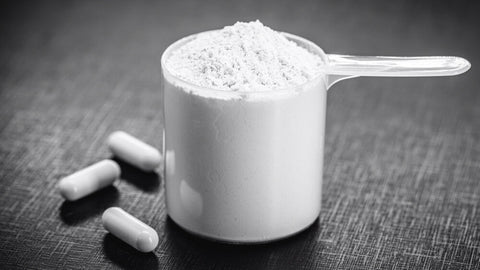Periodization: A Proven Plan for More Muscle and Strength
What’s your go-to set-rep scheme? Three sets of 10? 5x5? Four times eight? High reps (20+)?
This is a trick question. There should really be no go-to set-rep scheme. “All of the above” is the best answer – provided you’re doing all of them as part of a periodized program.
When it comes to sets, reps, and resistance (how much weight is used), periodization is truly the “secret sauce” for maximizing strength and size gains.
What is Periodization?
Although it’s a scientific concept, the definition of periodization is pretty simple: the systematic manipulation of specific training variables over a period of time. Those variables include the aforementioned sets, reps, and resistance, as well as exercises performed, exercise order, rest periods taken between sets, and rep speed (or tempo).
These variables can be manipulated in any number of ways, but to keep things simple for now, here are a few of the most common periodization schemes:
Classic (Linear) Periodization – where weight increases each phase (or mesocycle) while reps decrease. An example of this would be doing sets in the 15-20-rep range the first month of a program, then increasing weight and doing sets of 8-10 for all exercises the next month, and then increasing weight yet again and decreasing rep counts to 5-6 per set for the third month. Classic periodization models are typically used in athletes to maximize strength and power.
Reverse-Linear Periodization – where weight decreases each phase while reps increase. For example, starting with relatively heavy sets (ie, 4 sets of 6 reps or 5x5), decreasing resistance for the next phase and doing sets of 8-12 reps, and then decreasing weight once again for higher reps of 15+ per set. Reverse-linear periodization is used mostly for maximizing hypertrophy (muscle growth) and muscle endurance.
Undulating Periodization – a scheme where resistance and reps fluctuate in a non-linear fashion; for example, going from heavy to light, back to heavy, and so on. This helps create “muscle confusion” to spark new adaptations in the muscles. Undulating programs often seem “random,” but in most cases there’s a deliberate method to the madness. Undulating periodization has been shown to be effective for developing strength, power, and muscle mass.
Other periodization schemes exist (including pendulum and oscillating periodization), but above are the main types. For a more thorough explanation of periodization, refer to Dr. Stoppani’s periodization article. And if you’re looking for a workout program that involves periodization, literally every training plan on JimStoppani.com utilizes some form of periodization – and many programs include multiple periodization schemes simultaneously.
In the above video, Dr. Jim Stoppani explains the importance of selecting a periodized program for your training – as opposed to just “winging it” in the gym, or even worse, staying in your comfort zone and doing the same sets and reps for months (or years) on end. We all know people who do the same workout over and over: same exercises, same sets and reps (always 3x10 or 5x5 or whatever), and unfortunately, same lackluster results.
Don’t be that guy or gal. Develop a periodized plan, or make it easy on yourself and do one of Dr. Stoppani’s programs. While you’re at it, combine your periodized program with Pre JYM or Pre JYM X to maximize workout intensity and results.




